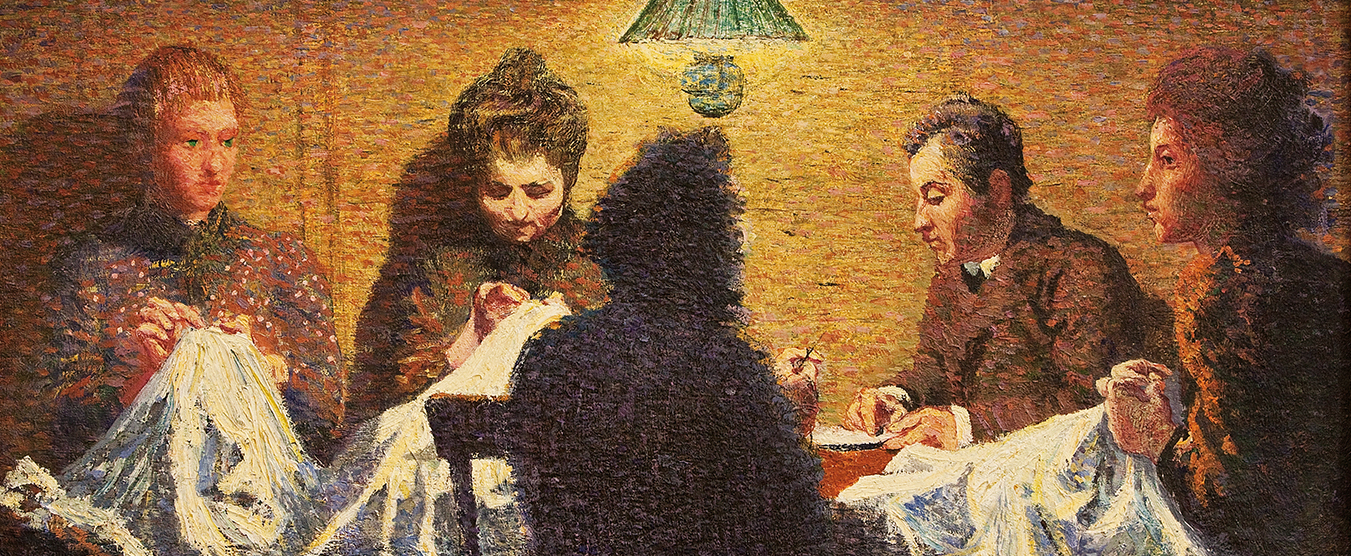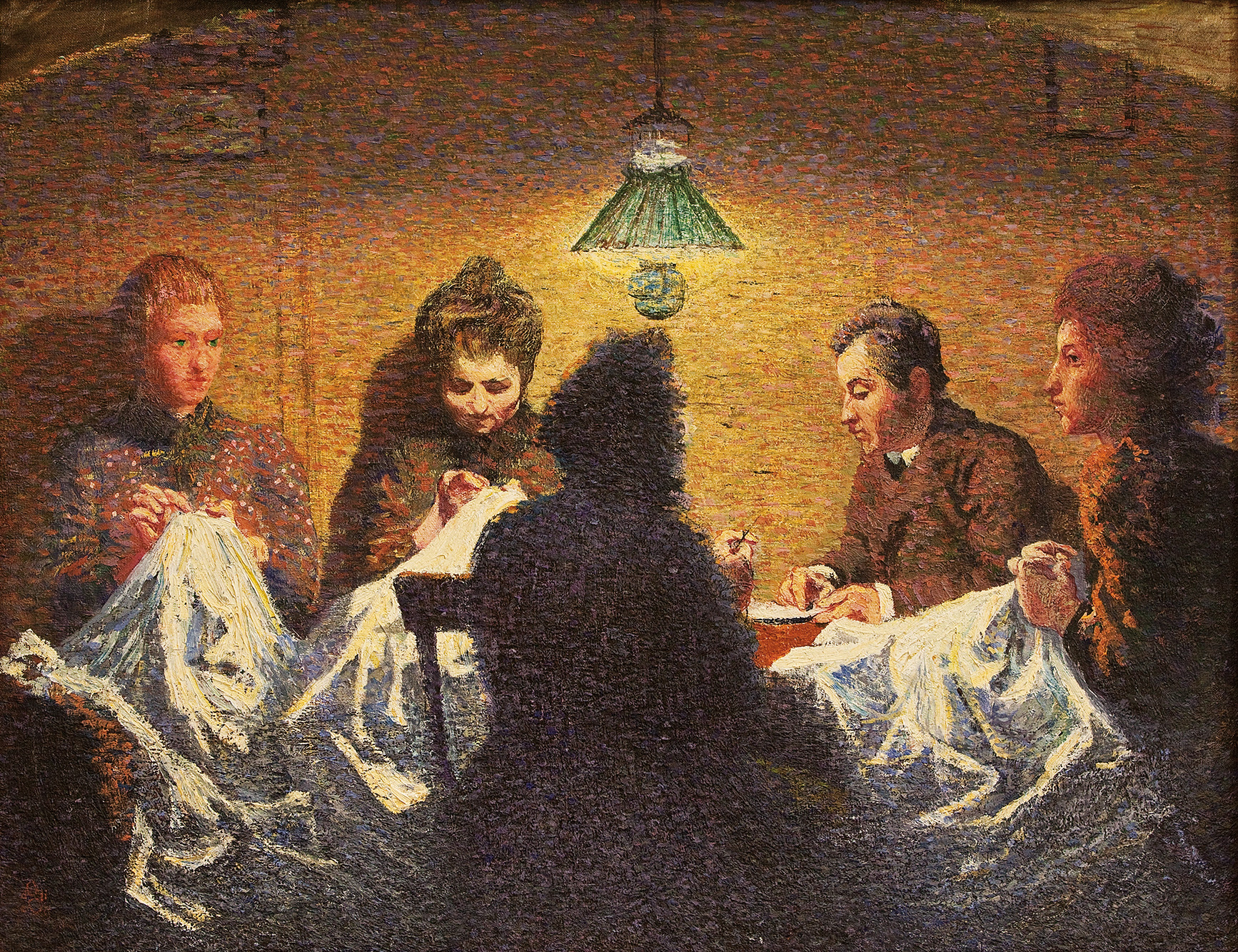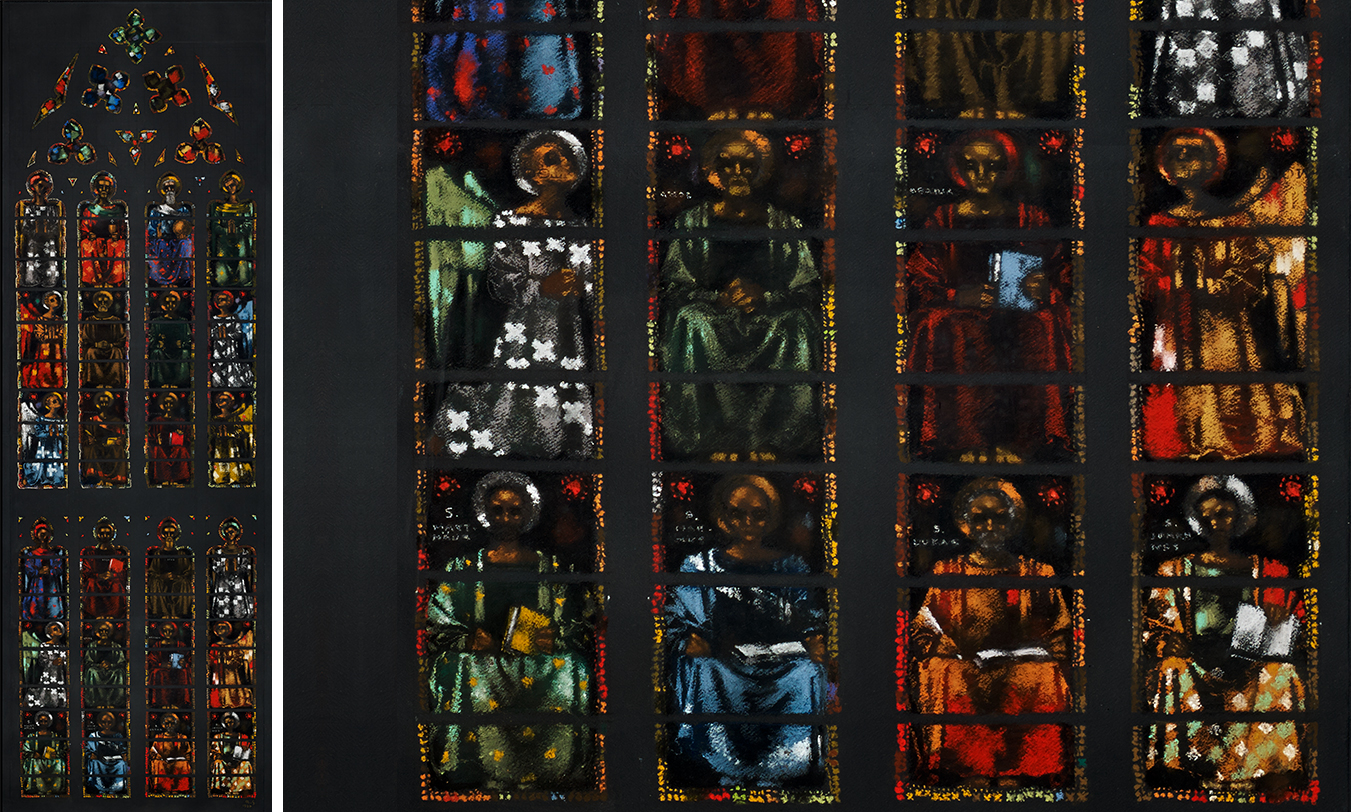







The museum, an imposing structure dating from the 16th century, houses apart from many items relating the people and nature in the valley, a fine collection of works by the various local artists.
The village of Stampa, small and even without a church, nevertheless was put on the map of modern art, through the artistry by Giovanni, Alberto, Diego and Augusto Giacometti, all born in this village and buried in the neighbouring cemetery of Borgonovo.
In addition to works by these artists, Willy Guggenheim (Varlin) is represented by a very large painting portraying the people of his village Bondo.
After visiting the international art exhibition in May 1888, particularly impressed by the paintings by James Whistler, the two young artists decided that Paris must be the place to learn. From autumn 1888 until 1991 they attended the Academie Julian, Tony Robert- Fleury and the Ecole Nationale des Beaux-Arts.
Feeling Isolated in the valley back home, Giovanni undertook a trip to Rome and Torre del Greco, from where he returned penniless and depressed. And then, in 1894 he met and became a close friend of Giovanni Segantini, who proved to be a kind mentor and encouraged Giovanni to follow his calling – a crucial turning point. 1897 brought the first commercial success, the following year the first exhibition, together with Cuno Amiet and Ferdinand Hodler, and in 1900 his marriage to Annetta Stampa. Four children were born to this strong marriage, Alberto, Diego, Ottilia and Bruno.
First they lived together in Borgonovo and then, in 1904 the family moved to Stampa where they settled for good, having found an apartment and the adjoining barn, which Giovanni had refurbished as an atelier.
In 1909 they received another house in Capolago (Maloja), where another atelier was installed, thus during the summer months the family would move up there by the estuary of Lake Sils. Participating in an exhibition of the “Bruecke” group of painters in 1908 was followed by a large exhibition including 50 paintings, shown at the Kunsthaus in Zurich. A first retrospective exhibition was shown in 1920 in the Kunsthalle Basel. Giovanni served as member of the Federal Art Commission and the Gottfried Keller Foundation. Having lived in Paris of the impressionist painters, with particular admiration for Edouard Manet, he was after that deeply influenced by the divisionist style of painting as practised by Giovanni Segantini. Careful study of Vincent van Gogh’s work, as well as that by Paul Cezanne left clear traces in his work. Together with Cuno Amiet, he figures among the first Swiss artists, who embraced and developed further contemporary art, issuing from Impressionism, Post-Impressionism and the art of the Fauves. His palette is luminous reflecting the very particular light that illuminates the valley Bregaglia and the Upper Engadine.

Veglia, 1901
Oil on canvas,
Museo Ciäsa Granda
While working in ornamental Art Nouveau style, it is during these years in Paris, that Augusto drew his first abstract compositions. These reflect his ardent passion for colour and issue from the study of butterfly’s wings that he observed in the botanical garden. From 1902 to 1915 Augusto lived in Florence, where he studied art of the early Renaissance, and where he taught academic drawing.
Revoking the Triple Alliance, Italy entered the war in May 1915. This caused Augusto to leave for Switzerland and he rented an atelier in Zurich on the Raemistrasse. He made the acquaintance of important collectors, such as Richard Kisling and Alfred Ruetschi. Many
public commissions followed for wall paintings, as well as stained glass windows. Here too he met with members of the Dada group and took part in the 8th Dada-Soiree with Alice Bailly. From 1918-1920 Augusto was a member of the artists group Das Neue Leben.

Il paradiso, 1930
Pastell on card
Museo Ciäsa Granda
January 9th Alberto arrived in Paris, enrolled in a life drawing class at the Academie de la Grande Chaumiere and a sculpture class at the same given by Emile-Antoine Bourdelle. Alberto remained enrolled until 1927. His brother Diego having joined him in 1925, his circle of friends widened beyond the academy, and now included Pierre Matisse. He entered into a relationship with Flora Mayo, which lasted until 1929. After brief stays in two different ateliers, he moved in 1927 together with Diego into the studio at 46, rue Hippolyte-Maindron, which was to serve as his home until his demise. Not satisfied with the form of his sculptures, Alberto experimented with Cubism and studies African art. Influential were the works by Alexander Archipenko, Jacques Lipchitz and Henri Laurens, the latter became a friend. Portraits of his mother and his father developed into the greatly abstracted reliefs, which found admiration among avant-garde artists. He got to meet Andre Masson, Hans Arp, Joan Miro, Max Ernst, Alexander Calder and Pablo Picasso. Also the surrealist writers, such as Louis Aragon and Georges Bataille sought to meet the artist. Michel Leiris wrote an important essay about Giacometti in Documents.
1930 Alberto joined the Surrealists, and having been introduced by Man Ray to Jean-Michel Frank, he and his brother began designing vases, lamps and appliques, thus securing badly needed income. Commissions for jewellery were placed by Elsa Schiaparelli.
With his reputation established, many exhibitions, commissions and honours followed. Ernst Scheidegger and Peter Muenger produced a film about the artist, the French nation bestowed the Grand Prix de Sculpture Nazionale and the university of Berne the Doctor honoris causa. Apart from Annette and Diego, he portrayed the Japanese professor Isaku Yanaihara and commencing in 1961, his companion Caroline. Jean Genet published in 1954 L’atelier d’alberto giacometti, which offers a remarkable insight. The last intense study was of Eli Lotar, of whom he modelled three different versions, the last of which Diego cast in bronze after Alberto’s demise on 11 January 1966 and placed on the tomb in Borgonovo.

Eli Lotar III, 1965
Bronze, cast in 1968
Museo Ciäsa Granda, prestito illimitato
He collaborated with his brother to create decorative objects for Jean-Michel Franck until the outbreak of WW II.
From 1941 – 1945 Diego lived and worked alone in the atelier and suffered considerably through lack of income. During this time he took courses at the Academie scandinave and modelled the first figures.
Upon the return of Alberto, Diego prinicpally served as assistant to his brother by working the stone, preparing the armatures for the plaster models, taking cast of the sculptures, and taking care of the casting in bronze and the varnish, in which he excelled. At the same time though, he continued creating decorative objects, often enlivened by figures of animals. After Alberto’s demise, he greatly increased his creative output by modelling furniture, chandeliers and appliques, mostly cast in bronze.
For the Fondation Maeght in Saint-Paulde- Vence, he supplied the furnishings in the Cafe Diego, the same for the bar in the Restaurant Kronenhalle in Zurich and many collectors, such as Hubert de Givenchy. The largest commission was the furnishing of the Musee Picasso, which opened in 1985, the same year when Diego died. In all his works a tender love for animals clearly is evidenced.

The Cat “maitre d’hotel”
Bronze, conceived in 1961, second version of 1964
Museo Ciäsa Granda
After the demise of Zborowski, Varlin returned to Switzerland, moved together with his mother and twin sister Erna to an apartment in Zurich. This town remained his place of work until the 60s. The first important exhibitions took place throughout the 1950s and in 1960 the Guggenheim price for Switzerland is bestowed on Varlin. In that same year he represented Switzerland at the Biennale in Venice, together with Otto Tschumi and Robert Mueller. Years earlier Franca Giovanoli from the Bregaglia had presented herself in his atelier as a model, the two got married in 1963 and Varlin increasingly staid and worked in Bondo – by 1971 he gave up his Zurich atelier altogether and lived in Bondo until his demise.

Gente del mio paese (People of my village), 1975 – ’76
Oil and other media on tarpaulin
Museo Ciäsa Granda
